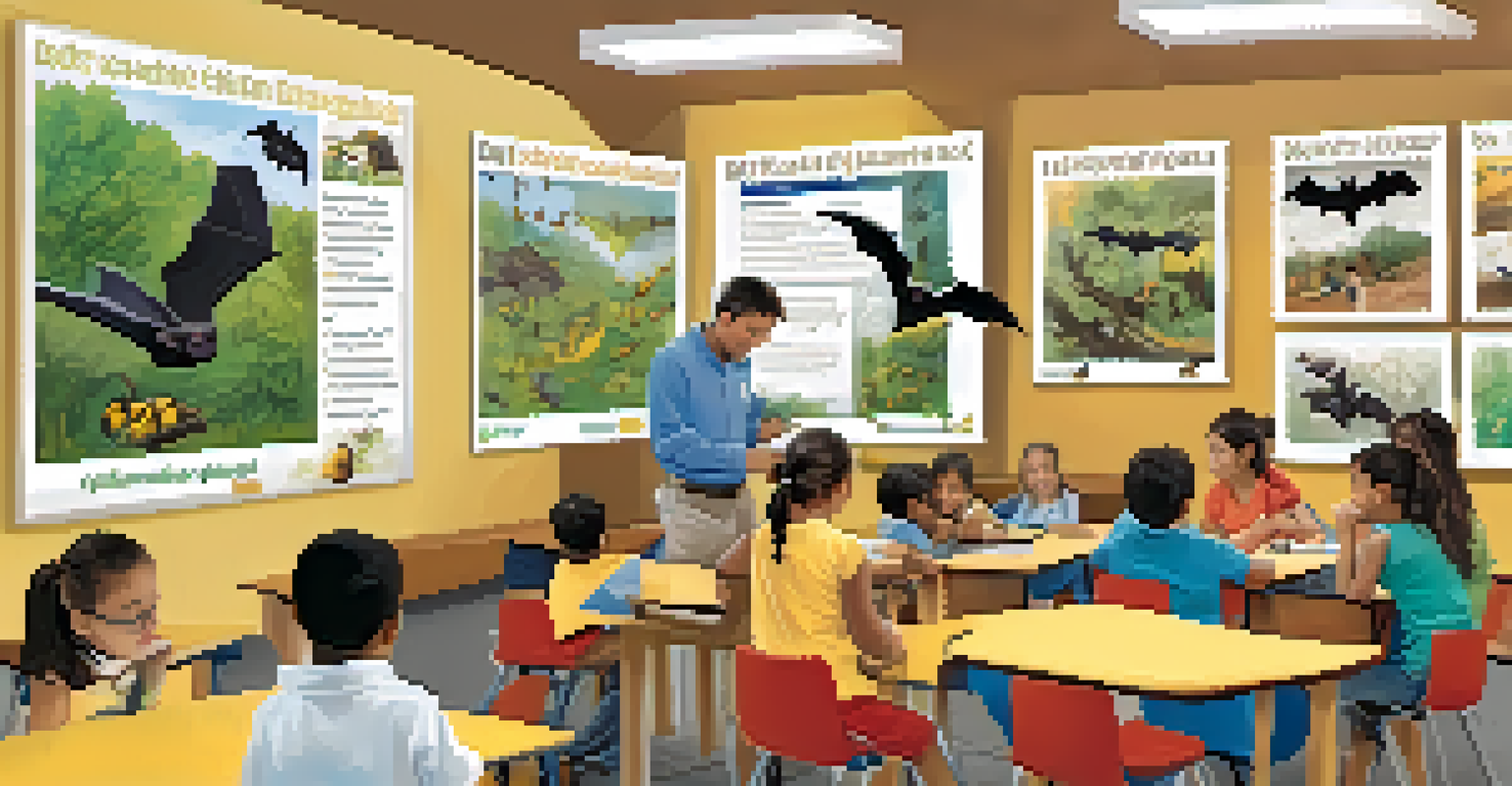Bats in the City: Their Role in LA's Urban Ecology

Bats: The Unsung Heroes of Urban Ecosystems
Bats often get a bad rap, but they play a crucial role in urban ecosystems, especially in Los Angeles. These fascinating creatures help control insect populations, including pesky mosquitoes and agricultural pests. By keeping these populations in check, bats contribute to a healthier environment for both humans and wildlife.
Bats are not only a vital part of our ecosystem but also a crucial ally in the fight against pests and disease.
Imagine a summer evening in LA without the constant buzz of mosquitoes—this is partly thanks to bats, which can consume thousands of insects in a single night. Their nocturnal feeding habits help maintain the balance within the urban food web, ensuring that no one species overwhelms the others. This balance is essential for a thriving ecosystem.
Additionally, bats contribute to plant health through their role as pollinators and seed dispersers. Certain bat species help pollinate various plants, including some that are vital for local agriculture. This interconnectedness illustrates just how essential bats are to our urban landscape.
The Diversity of Bat Species in Los Angeles
Los Angeles is home to a variety of bat species, each playing a different role in the ecosystem. From the common little brown bat to the larger hoary bat, these species showcase an impressive range of adaptations. Understanding their differences helps highlight their unique contributions to urban ecology.

For instance, the Mexican free-tailed bat, known for its incredible flying speed, can cover large areas in search of food. This capability allows it to effectively control insect populations over wide urban territories. In contrast, other species might prefer specific habitats like parks or green spaces, emphasizing the importance of preserving these areas.
Bats Control Urban Insect Populations
Bats significantly reduce insect numbers, including mosquitoes, by consuming thousands of insects each night, promoting a healthier urban environment.
By protecting these diverse bat species, we not only save them but also ensure that our urban ecosystems remain vibrant and resilient. Each species contributes uniquely, underscoring the importance of biodiversity in our cities.
Bats and Their Impact on Pest Control
One of the most significant benefits bats provide is pest control, particularly in urban areas like LA. A single bat can eat between 600 to 1,000 insects in just one night, making them natural pest management tools. This is especially important in urban settings where pesticide use can lead to environmental concerns.
The conservation of bats is essential for maintaining the balance of our urban ecosystems, as they play a key role in pollination and pest control.
Consider the implications of relying on bats for pest control: lower pesticide use means healthier ecosystems, reduced chemical runoff, and safer environments for both people and pets. This natural approach to pest management highlights the interconnectedness of urban wildlife and human health.
Furthermore, the presence of bats can enhance agricultural productivity by reducing the need for chemical interventions. Farmers can benefit from these natural pest controllers, leading to sustainable practices that favor both biodiversity and economic viability.
Bats as Pollinators and Seed Dispersers
While we often think of bees when it comes to pollination, bats also play a vital role in this process. Certain bat species are known to pollinate flowers, particularly those that bloom at night. This nighttime activity supports a range of plants, some of which are crucial for local agriculture.
Moreover, bats help in seed dispersal, which is essential for forest regeneration and maintaining plant diversity. By consuming fruits and spreading seeds through their droppings, bats contribute to the growth of new plants in urban and rural areas alike.
Bats Enhance Plant Diversity
As pollinators and seed dispersers, bats play a crucial role in supporting plant health and biodiversity, vital for both urban and agricultural ecosystems.
This dual role as both pollinators and seed dispersers underscores the importance of bats in sustaining the health of our ecosystems. Their activities not only support plant life but also the myriad of other species that rely on these plants for survival.
Challenges Facing Urban Bat Populations
Despite their vital contributions, bat populations face several challenges in urban environments. Habitat loss, pollution, and climate change are significant threats that have led to declining numbers of various bat species. In cities like Los Angeles, the expansion of urban areas often means reduced natural habitats.
Additionally, misconceptions about bats can lead to negative attitudes towards them, resulting in harm rather than protection. Education and awareness are key to changing perceptions and fostering coexistence between humans and bats in urban settings.
Addressing these challenges requires collaboration between wildlife agencies, urban planners, and the community. By working together, we can create strategies that promote bat conservation while enhancing urban biodiversity.
Creating Bat-Friendly Urban Spaces
To support bat populations in urban areas, creating bat-friendly environments is essential. Simple actions like planting native plants and providing roosting sites can make a significant difference. Installing bat boxes is an effective way to offer safe nesting locations, encouraging bats to thrive in the city.
Moreover, maintaining green spaces and minimizing light pollution can help attract bats back into urban areas. Bats are sensitive to light, and reducing nighttime illumination can enhance their hunting efficiency and overall habitat quality.
Community Action Supports Bats
Engaging local communities in bat conservation efforts promotes awareness and protective measures, ensuring the survival of these essential species in urban areas.
Community involvement is crucial in these efforts. By educating neighbors and implementing bat-friendly practices, we can all play a part in fostering a welcoming environment for these incredible creatures.
The Importance of Community Involvement
Community involvement is vital for bat conservation efforts in urban areas. Educating residents about the benefits of bats can help shift negative perceptions and encourage protective actions. Workshops, school programs, and local events can engage the community and foster a sense of stewardship towards these creatures.
Additionally, citizen science initiatives can empower individuals to contribute to bat monitoring and conservation efforts. By participating in surveys or reporting bat sightings, residents can play an active role in understanding and protecting local bat populations.

Ultimately, a community that values and protects its local wildlife will help ensure the survival of these essential species. Through collaboration and shared knowledge, we can create a healthier urban ecosystem for both bats and humans.